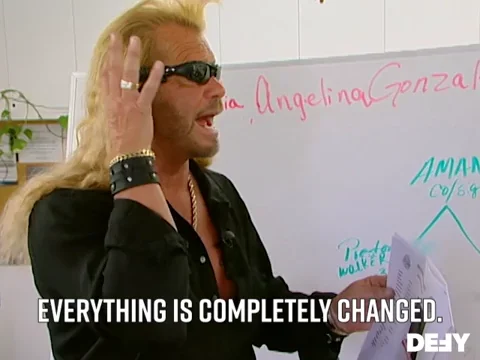If you want your content to appear on Google’s first page, it has to be refreshed and modified on a regular basis. In this guide, we’ll go over everything you need to know about content upgrades.
Important thing to remember: content creation never stops.
Although you may have recently published an article that ranks highly in the search engine results pages, or you have content on your website that hasn’t been visited in years, it’s always beneficial to go back and assess what could be improved.
Why Should I Upgrade My Content?
The reasons for needing to revise content vary depending on what kind of content it is. Let’s review some of the main factors on why you should upgrade content.
Your Competitors are Upgrading Their Content … So Should You
The realm of SEO and affiliate sites has become more competitive than ever before … and it’s not slowing down. Anytime you launch a new site or create new content on your existing site, you’re fighting for a spot over your competitors.
Whether you’re creating new content or upgrading old content, you should always look at what your competitors are doing in the SERPs. The highest ranking sites are almost always providing more value to their audience – whether it’s through useful information, videos, links, etc. Savvy competitors always find a way to outrank their competition.
In order to get an edge, you should always be looking for ways to provide value to your readers – whether it’s innovating or improving your content, or creating new content around keyword clusters in your niche. This is an ever-changing space – what ranks well today may not necessarily rank well tomorrow.
Search Behavior is Constantly Changing
If you want your content to rank well, make sure that it satisfies searcher intent. To do this, figure out what searchers are looking for when they enter a query and provide them with that information. Easy, right?
Here’s the thing … search intent is always changing.
To better understand, let’s look at an example. In 2015, someone searching for information about Bitcoin was probably a curious investor trying to find more information about this obscure currency. There probably weren’t many articles or sites covering the topic – the SERPs were most likely scattered with blogs and forums and provided little information around it.
Unless you live under a rock, today, Bitcoin (and other cryptocurrencies) are some of the most searched terms on the web. Not to mention, the intent behind these search terms is much different.
In 2015, someone may have been trying to find some information on what it was. Today, users are looking for trading platforms, pricing, and any other “insider” information they can get on Bitcoin. In fact, it could be argued that in today’s SERPs, you have to be an expert on cryptocurrency and have a high authority to rank for any terms around this niche.
This is an extreme example because Bitcoin (next to Covid) is probably one of the fastest growing search terms in the last decade. However, it shows us that searcher intent changes over time as our experience with it changes.
So … content that responded well a few years ago may not respond the same way today.
Out-of-Date Information
Using reliable statistics and data from experts to make your content sound more credible is important in providing value to your readers.
However, just like search intent can change, so can facts and sources. Products become outdated, numbers increase and decrease, new facts or data come to light, the list goes on and on. Regardless of what it is, if your competition is citing newer, more reliable sources, then you’re stuck with out-of-date information.
Tip: this is why it’s important to think about what you’re going to write about before writing. A lot of sites will focus only on evergreen content – this is content you don’t ever have to update (in theory … realistically, all content should be updated and checked consistently).
Before writing or publishing content on your site, think about what you’re writing about and how relevant it will be 5 years from now. Are you reviewing products that release new models yearly? Are you covering a topic that is trending?
How to Determine What Content to Upgrade
Depending on how much content you have or how long your site’s been live, determining what content to upgrade can be a daunting task. Before you start making any updates, examine your pages and SEO.
Check Your SEO
All the time and effort put into your website would go to waste if people couldn’t find it through a search engine. Many things affect where on the SERP (search engine results page) your site appears.
There are a number of tools out there (mostly paid tools) that can help you determine what to improve. However, there are also a few ways to do this yourself and take advantage of a few free tools.
Here are some things to look for:
- Page speed: Is your site loading quickly on desktop and mobile devices? Do you have ads or other software that may be slowing it down? You can check your site speed for free here.
- Keywords: Is your content targeting and ranking for the correct keywords? Are the keywords included in your title, meta descriptions, sub-headings, etc? You can sign up for a free trial of SEMrush or Ahrefs to find out what keywords you’re ranking for. Or, just search the keyword into Google and see where you rank (this is more time consuming though).
- Site security: Does your site have an SSL certificate? If not, this is highly recommended.
- Broken links: Do the links on your site all work? Are you redirecting to new ones? Do your product links work?
- Product links: Are your product links linking to the right page? Are the products out of date or out of stock? Many affiliate sites lose thousands of dollars in affiliate income this way. You can check your product links for free using SiteBuddy.
- Mobile: Is your site optimized for mobile? How much traffic is coming through mobile vs desktop?
Examine Your Competitors
Yes, I understand. It’s another thing to do before you even launch your website, but it’s critical to study the competitive landscape first. This also relates to your SEO audit. Examine the top results for the keywords you wish to target and see what the major pages are doing in order to obtain those coveted spots.
When you’re looking at your competitor’s website, take note of their headings and see if they include keywords. Also, look for multimedia elements like videos or pictures. And overall, is there anything on their site that you could do better?
How to Select Pages to Upgrade
Like I said, determining which pages to upgrade can be a time-consuming task. However, you don’t need to review every single page on your site. Here’s how we can narrow down which pages to upgrade and save you tons of time.
Look at Pages That Used to Rank Well But Don’t Anymore
If your site used to draw a lot of traffic but has lately dropped off considerably in the SERPs, it’s a strong indication that it’s time for an update. It’s quite conceivable that a page is being outstripped by newer content from your rivals, taking everything you did right with it and extending on it.
An easy (and free) way to do this is to check your Google Analytics. Go through the last year (or longer) and see which pages have fallen off. Look for dips in traffic, clicks, conversions, or anything else that may indicate a decline.
Make a note of these pages in a spreadsheet, then review each one and the competitors that are outranking you – see if you can spot any major differences between you and your competition. Is your data out-of-date? Are your products linking properly? Are you targeting the right keyword?
Look at Your Top Performing Content
This might seem silly to suggest, but hear me out.
Most sites follow the 80/20 rule: 80% of your traffic comes from 20% of your content. If this is the case for your site, that means your top performing content is extremely valuable. In other words, you need to take good care of it.
To put it in simple terms, let’s say you have 100 posts on your site and your organic traffic is 10,000/month. This means that 20 of those posts are generating 8,000/month traffic for you. For argument’s sake, let’s assume that traffic is split evenly amongst those posts. If one of those posts starts to lose traction or becomes outdated, you’re now at risk of losing 400/month traffic. One post could affect 4% of your overall traffic … just one! Imagine what multiple posts could do.
This is why it’s best to be proactive and anticipate changes or updates to your top performing pages. Always check the competitive landscape, update links and products as needed, and make sure your sites are optimized properly.
Look at Your Second-Tier Performers
What I mean by “second-tier” are pages that are ranking well, but not great. There are two factors to consider when determining these pages.
- What page is your content ranking on in Google?
- How much traffic is your content getting?
Your second-tier pages are ones that aren’t getting you a ton of traffic, but still perform well. They might be ranking somewhere between pages 2-10 on Google and getting you a small portion of traffic.
Why do you want to update these pages? Because if a page is ranking 10th in Google, it only has to jump up a few spots to be on page 1. Whereas a page ranking 80th in Google wouldn’t provide much more value unless it jumped up 70+ spots.
For example: let’s say you upgrade a piece of content ranking 10th; it moves up to spot 5; your traffic to that page doubles. Now let’s say you upgrade a piece of content ranking 80th; it moves up to spot 75; there’s no change in traffic.
Another thing to consider here is the volume in the SERPs – how is it spread out? Is the #1 ranked article receiving all of the traffic going to that keyword? Or is it spread out? Is the search term generating a snippet? Do people even click on the links, or do they just read the snippet and move on?
These are all important questions to think about as they’ll help you determine whether or not it’s even worth upgrading your content to move up a few spots.
Look at the Competition and Keywords
Now that you’ve narrowed down a handful of pages to upgrade, you’ll want to assess the keyword difficulty. Maybe when you originally published an article, the keyword had a low difficulty and ranking for it was fairly easy. But now, its search popularity has increased and the SERPs are full of high authority competitors. Yes, there’s most likely more volume going to it, but the competition is also more fierce.
What keyword are you trying to rank for and who else is now ranking for it? Are they high authority sites in your niche? Are they sites outside your niche? Have your rankings significantly dropped since publishing it, and if so, who is now outranking you?
Depending on these answers, you may need to reassess your strategy. You may want to completely rewrite the content, add more images and links, include a video element, or potentially even create clusters of supporting content around this pillar post.
How to Upgrade Your Content
It’s time to start your upgrades. This process doesn’t necessarily involve eyeballing your content and finding what might or might not be wrong with it. Instead, you’ll want to follow a set of steps to determine whether it needs to be updated or completely rewritten. Here are some things to look for:
Examine the Data & Facts
We’ve previously discussed how keeping your material current is critical to maintaining its freshness. This is one of the simplest things to verify and correct in your existing writing. Look for citations in your text and make these changes:
- Check the original source and make sure it’s still active: outbound links are great, but URLs change and information is removed. You should always check your external links to make sure they still work.
- Are your sources outdated / are they still relevant: do a quick search to make sure the data you’re referencing is still relevant to your topic and search intent.
- Check any data that you haven’t referenced: even if something is common knowledge, it can still change. Make sure you’re referencing the right information for any stats or data you present.
Search Intent and Function
Sometimes, this can be easily missed. With today’s SEO tools and optimization features, many people focus too much on optimizing and not on search intent.
There’s two ways to look at this:
- Put yourself in the searcher’s shoes and ask “am I matching the searchers intent?”
If you were searching for the term/keyword, would your article answer the question? Would it provide enough useful information that the reader wouldn’t have to go anywhere else to find it?
Remember, depending on the topic you’re targeting, readers don’t always read through an entire article – most of the time they skim it and look for the answers they need. Does your content highlight these properly? Is it organized and structured well?
- Can I make anything easier for the reader?
This relates to the first point, but is there anything you can do to make the readers experience better or easier?
If you’re including buttons or formulas in your article, look at widgets or plugins that may be easier to formulate these.
If you have ads running on your site, make sure they’re not interfering with the user experience too much.
Anything you can do to make the user experience easier will help your on-page SEO and overall traffic.
Keyword Research and Intent
If you want your content to rank on search engines, keyword research is essential, both when you first write the content and afterwards. Look for keywords that reflect what searchers are looking for and use them in your page’s title, title tag, and subheadings.
Repetition is natural, especially for individuals who are just getting started in the world of SEO. It’s tempting, particularly for writers who are still learning the ropes, to repeat a certain word over and over. Now is the time to rewrite any outdated language if this is the case.
Write conversationally – let your keyword usage come to you through normal speaking, rather than trying too hard to insert them and making your text sound like a commercial.
Make sure you’re targeting the right keyword – if your article covers a product round-up on the best blenders, then make sure you’re targeting that exact keyword rather than a specific brand or blender. The intent behind the former are searchers looking for product round-ups and reviews, whereas the intent behind the latter are searchers looking for the brands website or product.
Rewrite vs Revision
Does your content cover the information needed to match the intent of the keyword?
There’s a big difference between rewriting an article and revising it. Revising an article may just require you to update links and images, and check the data.
Whereas rewriting an article may require you to add up to 1,000 words of additional information.
Check the competitor landscape and compare your content to theirs. When you initially wrote the content, maybe a 1,000 word article would have sufficed. However, now competitors may be writing 2,000 word articles – this means you have to as well.
Search engines like Google recognize word lengths when ranking competitors and if yours falls short, you may need to add a lot more content than you had before.
Rewriting may also require adding additional sub-headings, FAQs, new data, new images, etc. Determining whether or not you need a complete restructure of the content is important.
Internal Linking
There are two main aspects to focus on when examining links and anchor text in older content. First, follow best practices for linking internally. This means your links should be integrated into the article’s main body text, and the anchor text used should give readers hints about what they will find on the linked page.
The second way to help improve your article is by finding and linking to new content that has since been published.
It’s important to be on the lookout for occasions where you can add links from your new content to older pieces. In some cases, it’s no problem to go back and revise old articles by adding these in. However, with other pieces – like when launching a crucial product page – it’s worth taking the time to specifically include relevant internal links from your old content.
How Often Should You Upgrade Content?
This depends on a few factors, but you should always be reviewing and ready to update your content – don’t be lazy!
It depends on your internal resources, your budget, and how much time and effort you’re willing to spend on your site. Refreshing your website’s content does not have to be time-consuming. Some components of the material may be vital for years without requiring any substantial adjustments.
You will most likely have to update the content on your website more often than every couple years. Keep track of which pages are ranking well in the SERPs, and see which ones have stopped growing or have begun declining. This way, you can adjust your strategy accordingly.
I would suggest creating a monthly plan to check in on your rankings and make modifications to your content’s SEO as needed. However, all of this is far easier said than done. Regular updating of your website requires a time investment, so if you’re already concerned that you won’t be able to keep up, get help from content specialists like Content Refined.
Wrapping Up
That about covers it! Hopefully the information I’ve provided here helps you in determining what content you should be upgrading and how to upgrade it.
If you need any help or tips on upgrading content, or maybe you just don’t have the time to do it yourself, reach out to us! We’ve worked with hundreds of affiliate site owners to update their content and have a team of experts that can help. You can check out our Content Upgrade Services here OR book a call with us below.
Happy writing!









